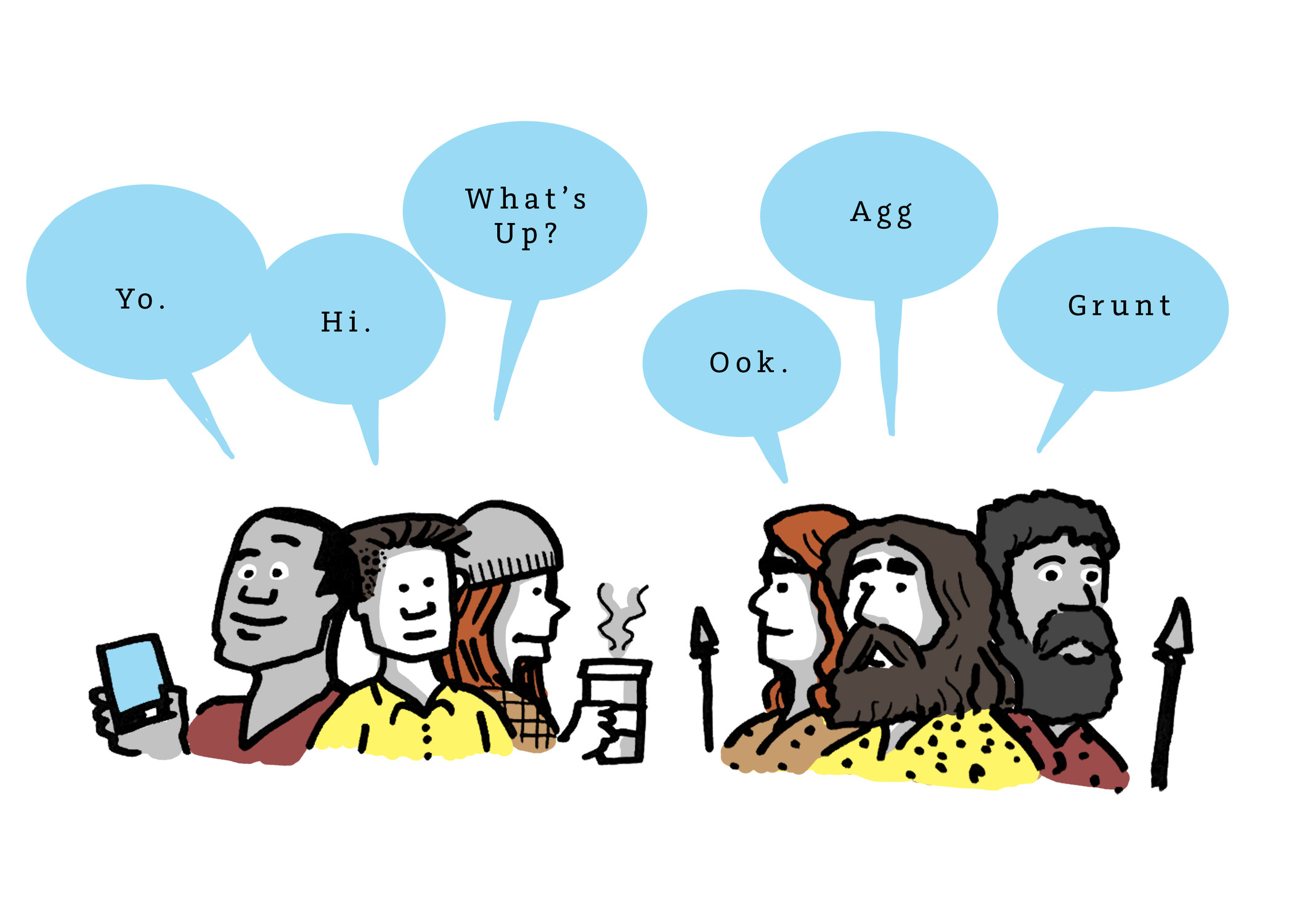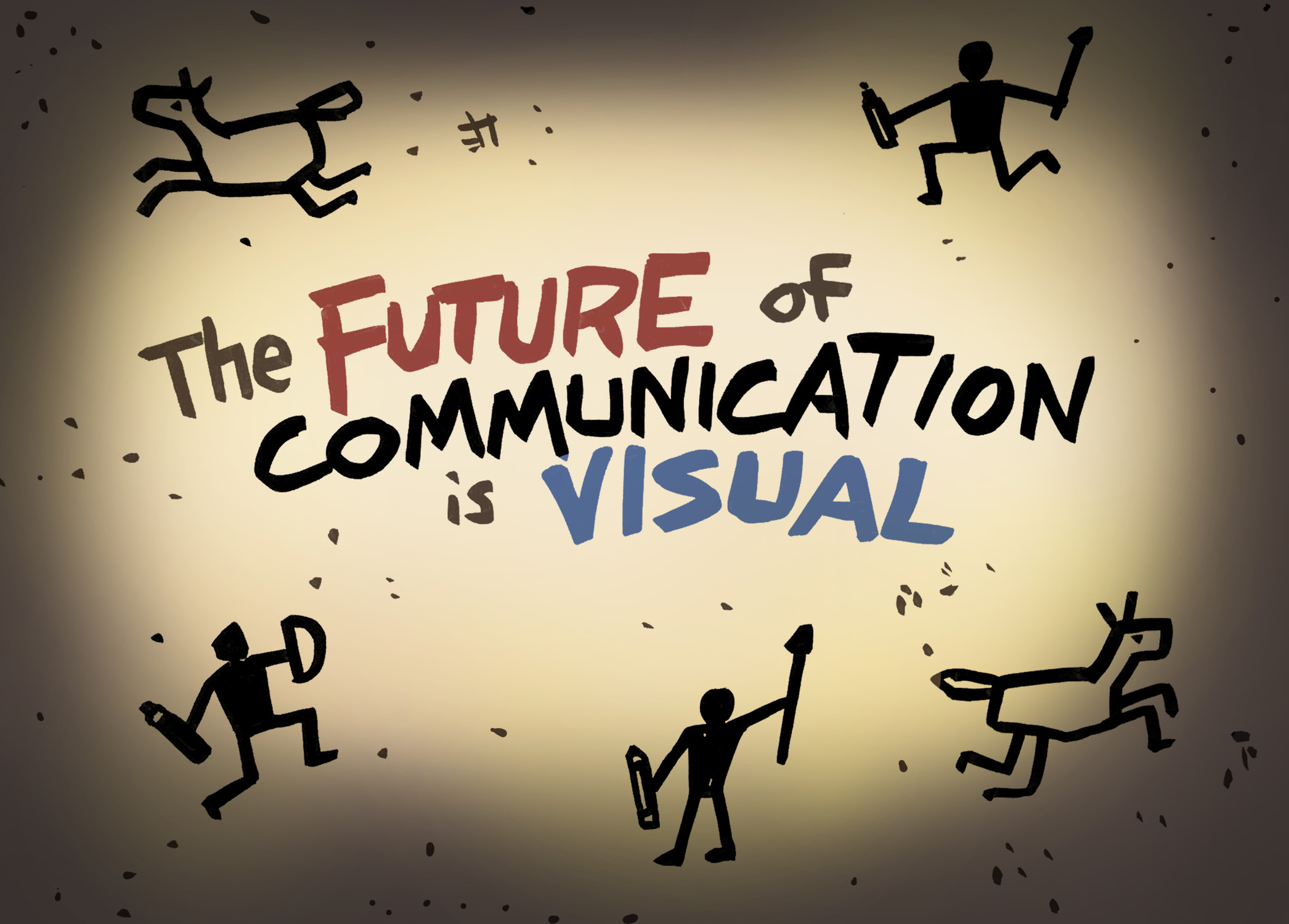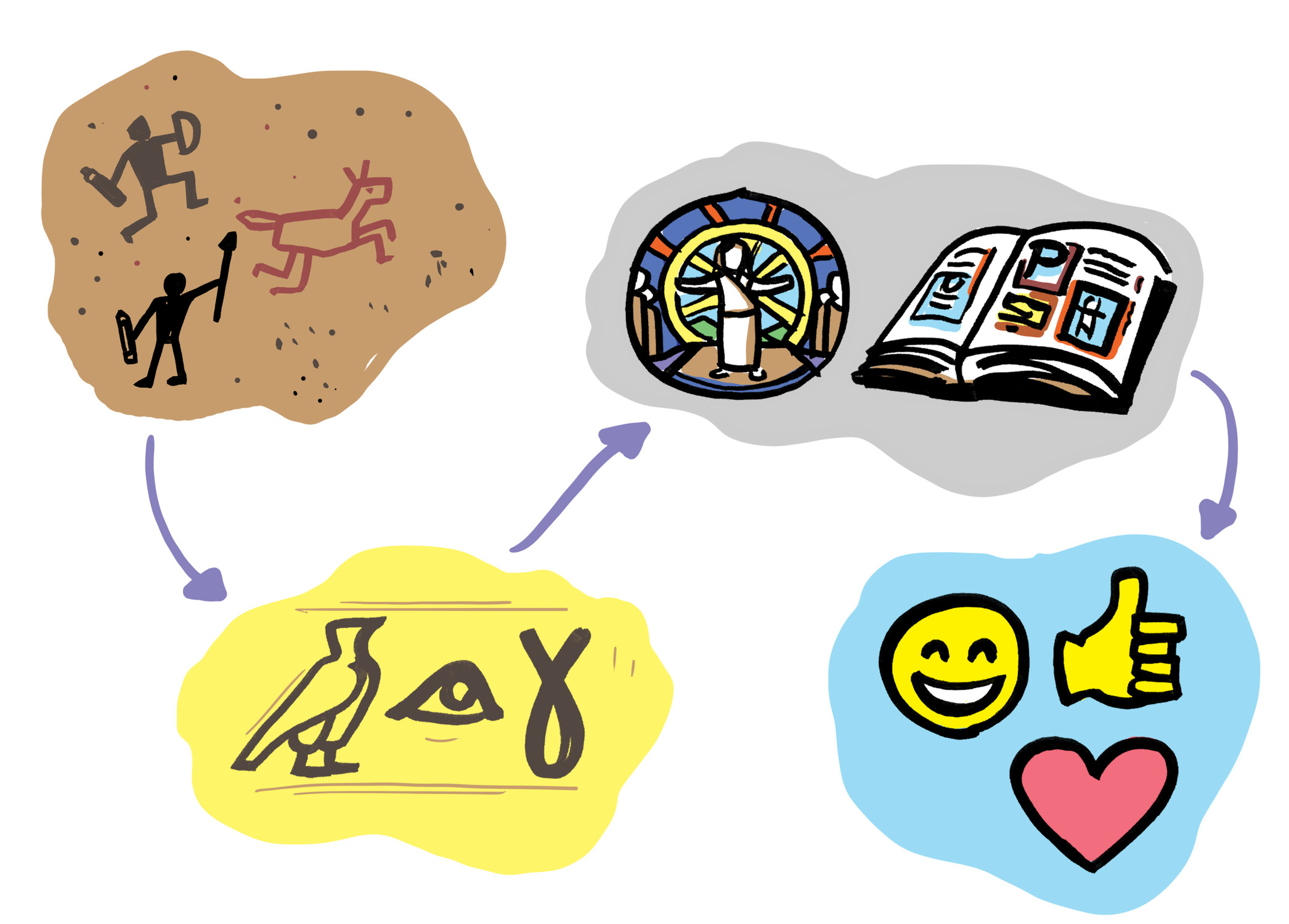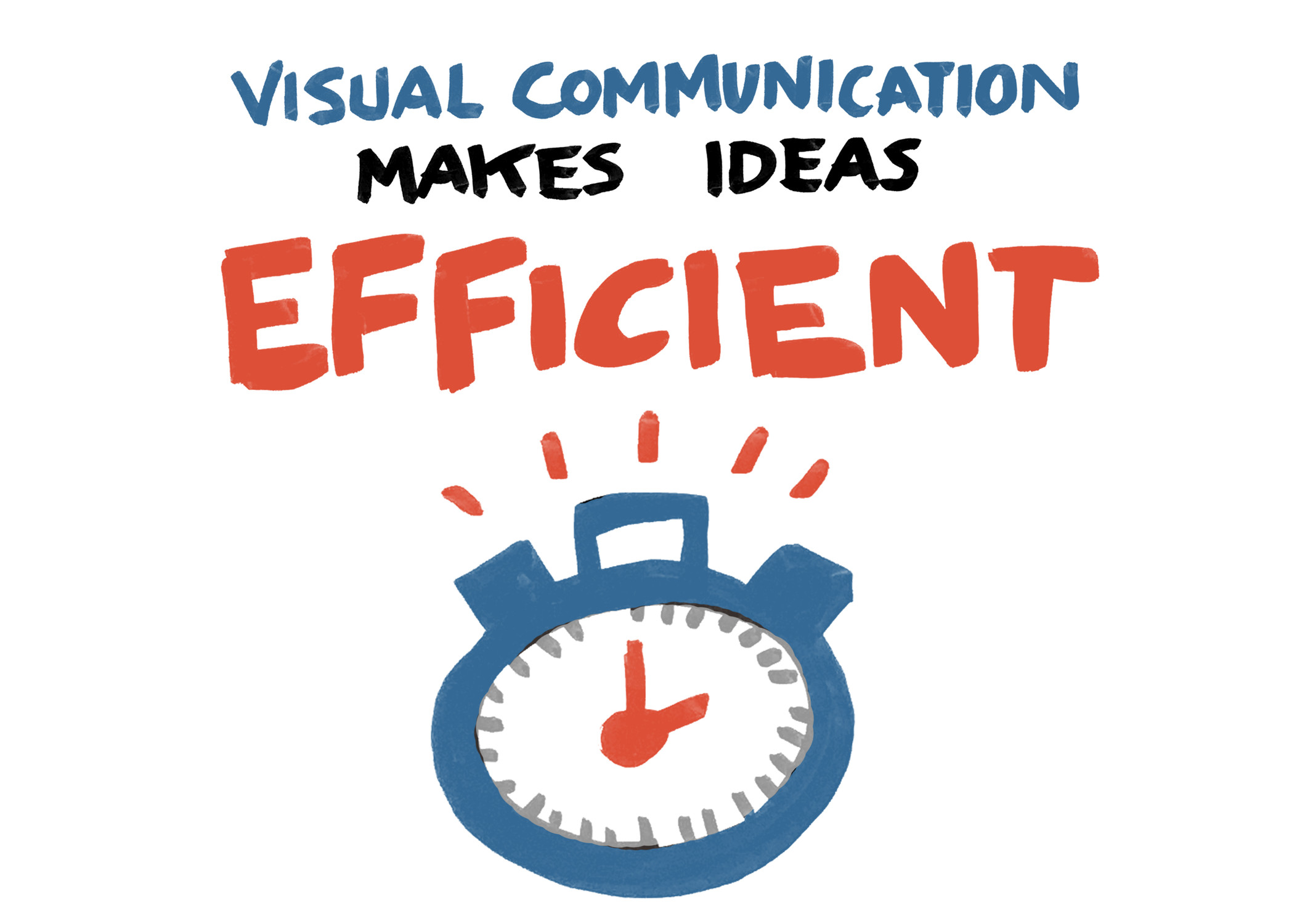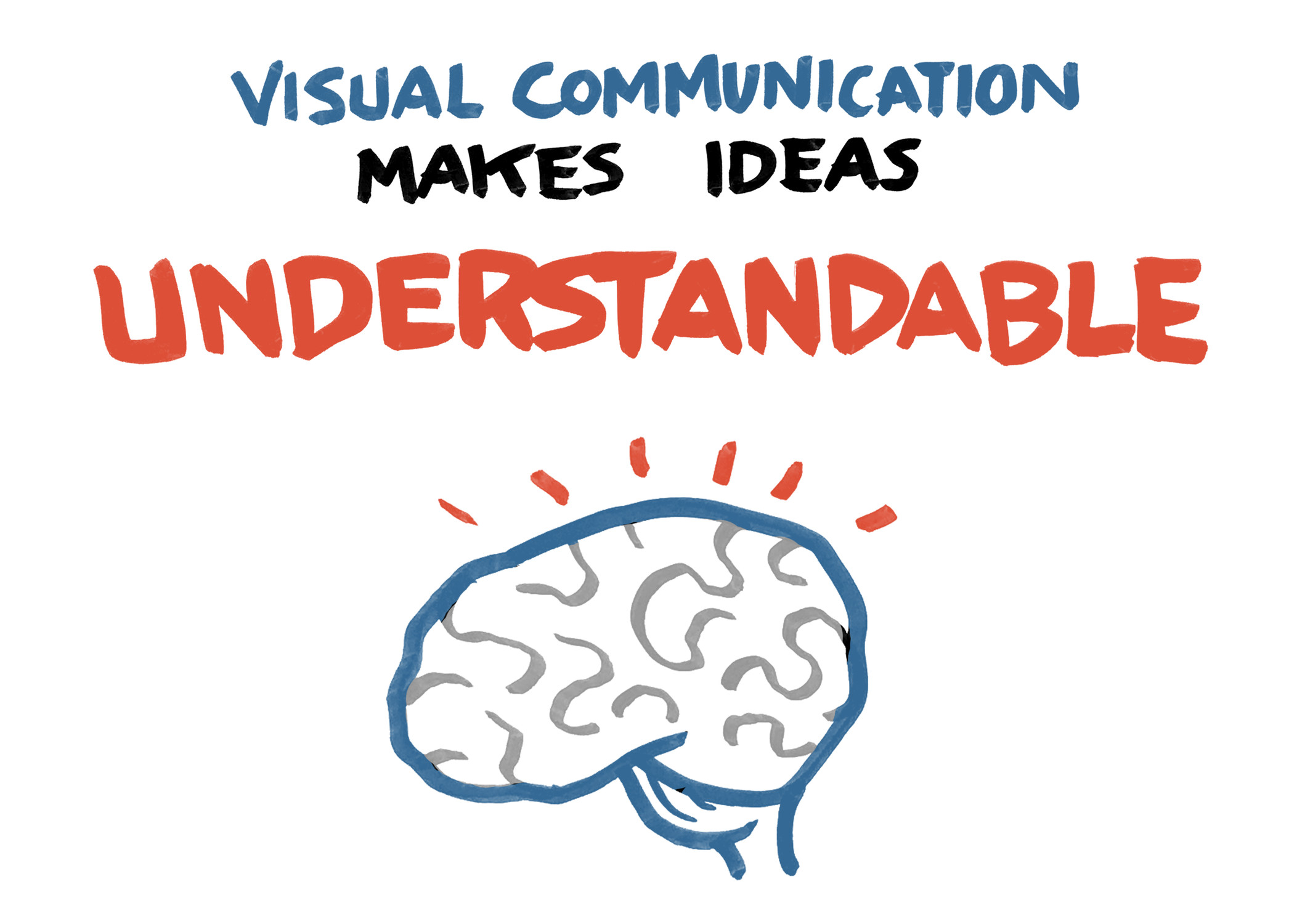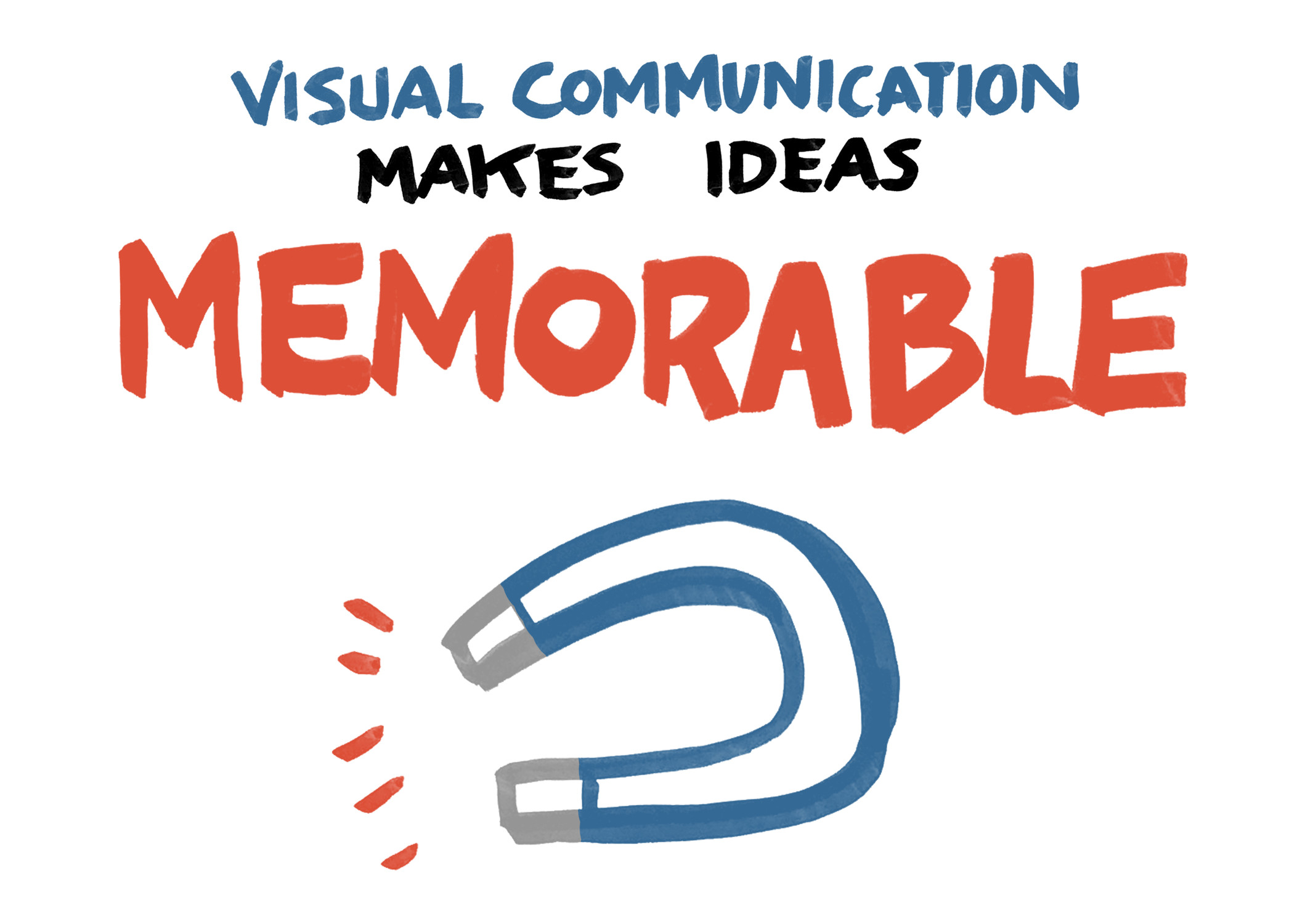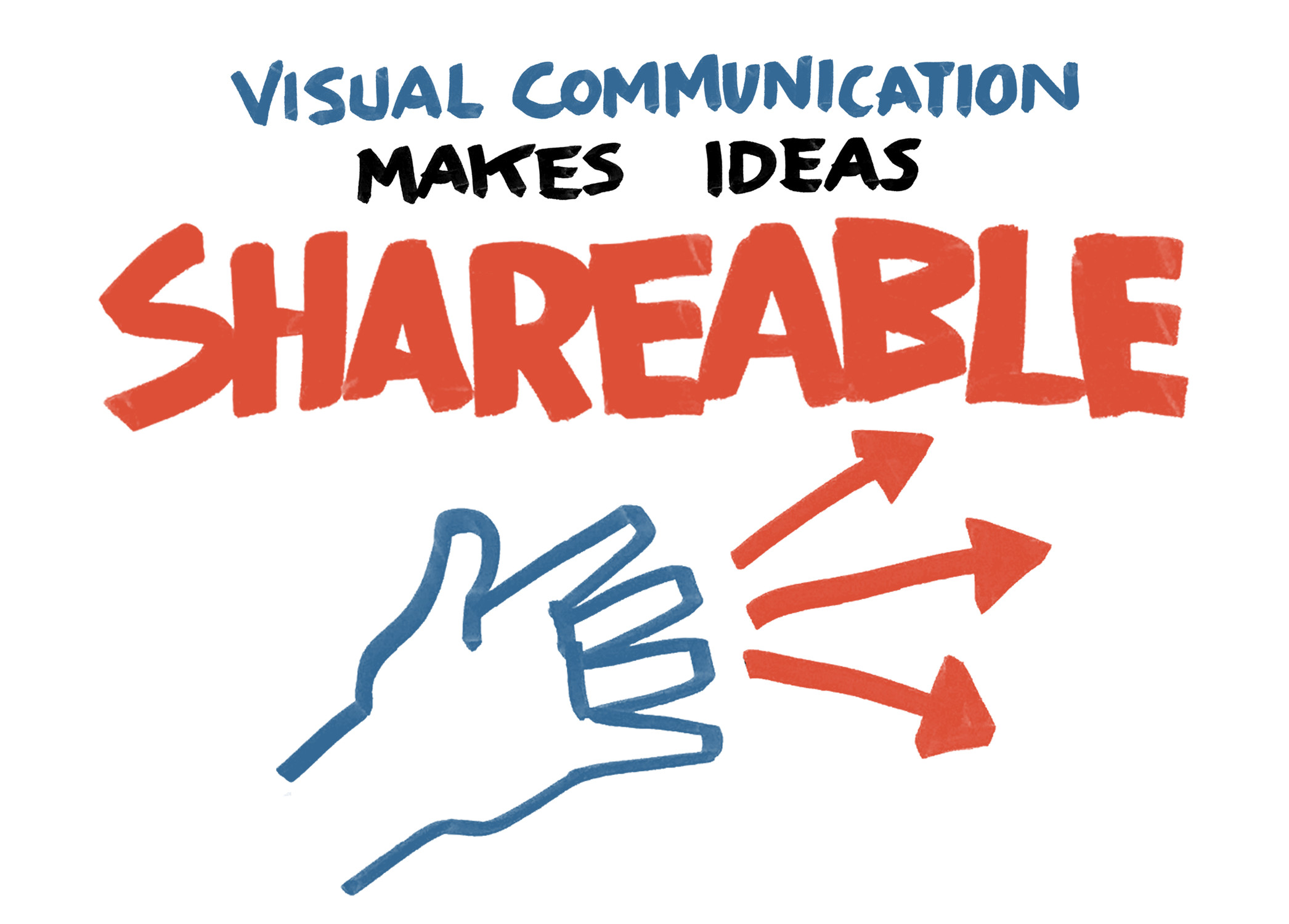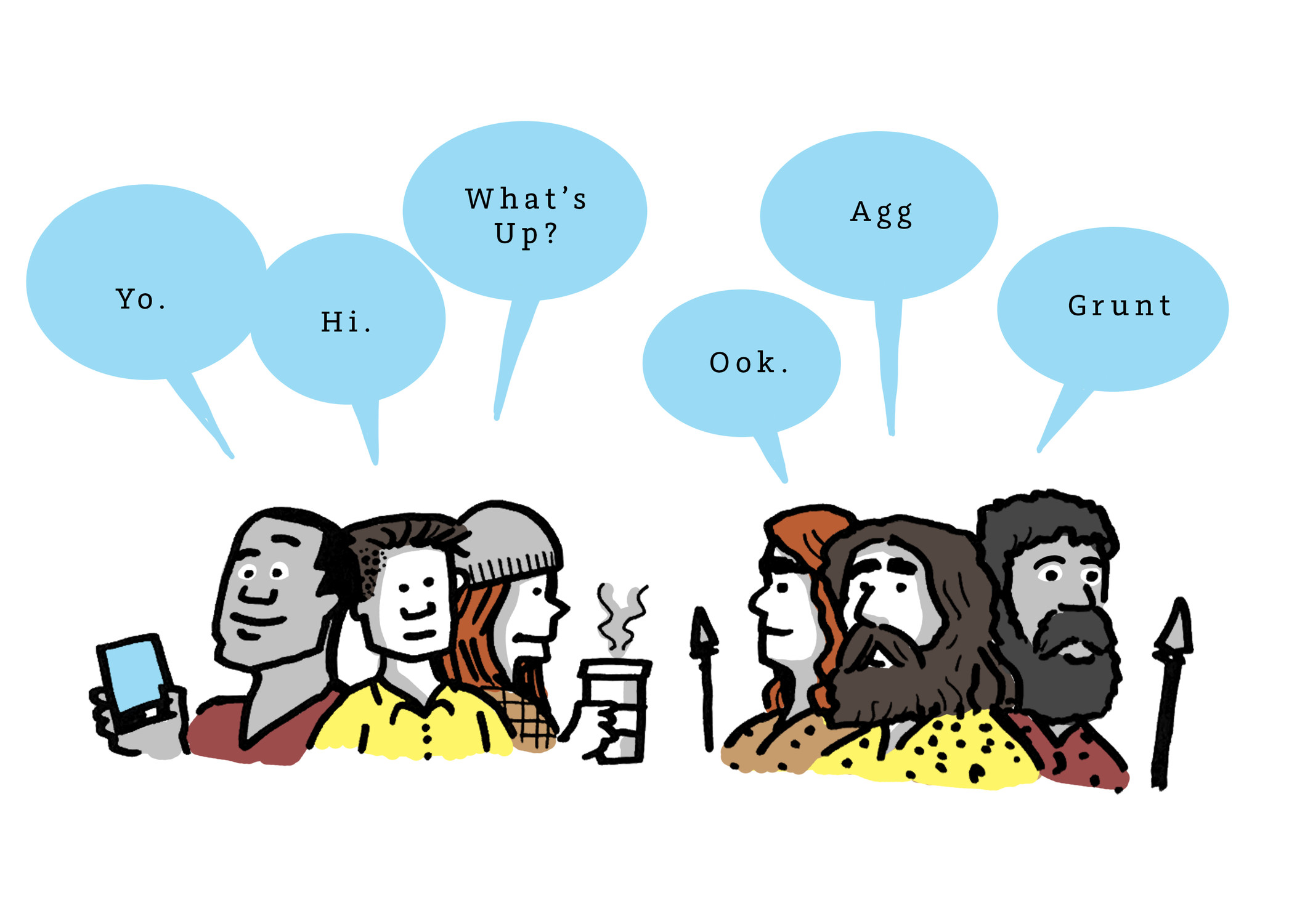Ok, I realize that question could open a big can of worms, so I’ll just get straight to the point.
Millennials, much like their prehistoric cavemen brethren, are experts at communicating ideas through pictures. They are proficient in visual communication.
We’ve all seen the cave paintings. Dated between 8K and 40K BC, these ancient humans would illustrate stories on cave walls, visually sharing ideas and concepts for ritualistic and other community-building purposes.
Millennials, who can compose entire text messages using only emojis, do the same exact thing.
And it’s not just Millennials. The generation coming after them, “Generation Z”, is even more adept at visual communication. Most of these young folks can’t remember a day before Instagram, YouTube, Snapchat, and Emojis.
The truth is, the future of communication is visual. And, curiously enough, so is the past.
And it’s not just the Cavemen who were great visual communicators. Human societies throughout the ages and spanning all continents have leveraged pictures to share ideas and tell stories.
Here’s a quick tour through history:
The Egyptians pioneered hieroglyphics—aka ancient emojis) around 10,000 BC. The ancient Chinese in 2000 BC developed logograms, similar to hieroglyphics yet more simplified. The Greeks and Romans around 2000 BC to 700 BC took it a step further as they created visual symbols that represented different sounds (which, of course, was the beginning of our modern alphabets). During the middle ages, illuminated manuscripts and stained glass windows were created by the church to communicate biblical stories to the illiterate masses.
Which brings us back to emojis.
The ironic thing about our future as a human species is that our methods of communication are beginning to resemble more and more the methods of our past. We’re less concerned with lengthy prose, verbosity, details and minutiae, and more interested in the big picture, the main ideas, and the greater themes.
The reality is that visual communication is in our DNA and it’s in our history. Sunni Brown, who wrote the awesome book “The Doodle Revolution”, says that “We are biologically attracted to information displayed visuospatially.”
We are getting back to our visual communication roots!
So, what does this mean for the rest of us—especially those of us in a business or professional context? Should we all abandon words and use only emojis?
Not necessarily.
What it means is that if you aren’t intentionally communicating your ideas and information visually, you are missing out…big time.
Visual learning is, without question, the strongest channel of human learning. I would argue that this is why it’s been such a common, and enduring form of human communication throughout the ages. As humans, we are hardwired to communicate and learn through visuals.
In fact, there are four key areas where visual communication outshines other methods of communication:
The old adage goes: “a picture is worth a thousand words.” I would argue it is worth far more than that!
The research shows that 93% of communication is non-verbal, and that the human brain processes visuals at an unfathomably higher rate than it processes text.
Moreover, visuals are a global language that transcends barriers of language and most cultural barriers as well.
In the Back of the Napkin, Dan Roam says “Pictures can represent complex concepts and summarize vast sets of information in ways that are easy for us to see and understand…they are useful for clarifying and resolving problems of all sorts.”
83% of human learning occurs visually. In fact, a study showed that people following directions with text and illustrations do 323% better than people following directions without illustrations
And sometimes, if you’re building an IKEA bookcase, your directions might not have text at all!
The truth is, visuals help you “see” the meaning. They help make complex ideas and subjects understandable and powerful by making them visible.
Again, the research backs this up. One compelling stat (all references below) is that people remember 10% of what they hear, 20% of what they read, and 80% of what they see and do.
Another bit of research shows that retention of information three days after a meeting or other event is six times greater when information is presented visually and verbally than when the information is presented only verbally.
For whatever reason, pictures get lodged in our brains much more than spoken or written text. Like experiences, we have a hard time forgetting powerful images and the ideas or concepts they embody.
It’s pretty simple—pictures are easier (and more fun!) to show to others. The outrageous growth of visuals-based social media platforms over the past few years testifies to this.
Moreover, considering their ease of use and mainstream availability, anyone with a smartphone, whiteboard, or sketchbook can share their ideas visually.
To quickly summarize, visual communication is incredibly powerful. It makes ideas efficient, understandable, memorable, and shareable. And not just on social media and in text messages. The principles of visual communication—and the value of it—applies to professional and business contexts as well.
Visual communication rules.
Millennials know it. The cavemen knew it.
Get in touch with your human roots and start communicating visually!
Sources and References
- Sunni Brown, “The Doodle Revolution”
- Citrinitas.com, “The History of Visual Communication” – https://citrinitas.com/history_of_viscom/
- HP, “The Power of Visual Communication” – https://policyviz.com/wp-content/uploads/2015/10/power-of-visual-communication.pdf
- Hubspot.com, “42 Visual Content Marketing Statistics You Should Know in 2017” – https://blog.hubspot.com/marketing/visual-content-marketing-strategy#sm.0001x7rtustvaduqxel1j4guxg0dp
- Inc.com, “4 Ways Visual Content Romances Your Audience” – https://www.inc.com/yoav-vilner/4-ways-visual-content-romances-your-audience.html
- Dan Roam, “The Back of the Napkin”
- Webdam.com, “Humans are Changing – How to Adapt Your Brand” – https://webdam.com/blog/brand-marketing-infographic
[/et_pb_blurb][/et_pb_column][/et_pb_row][/et_pb_section]


